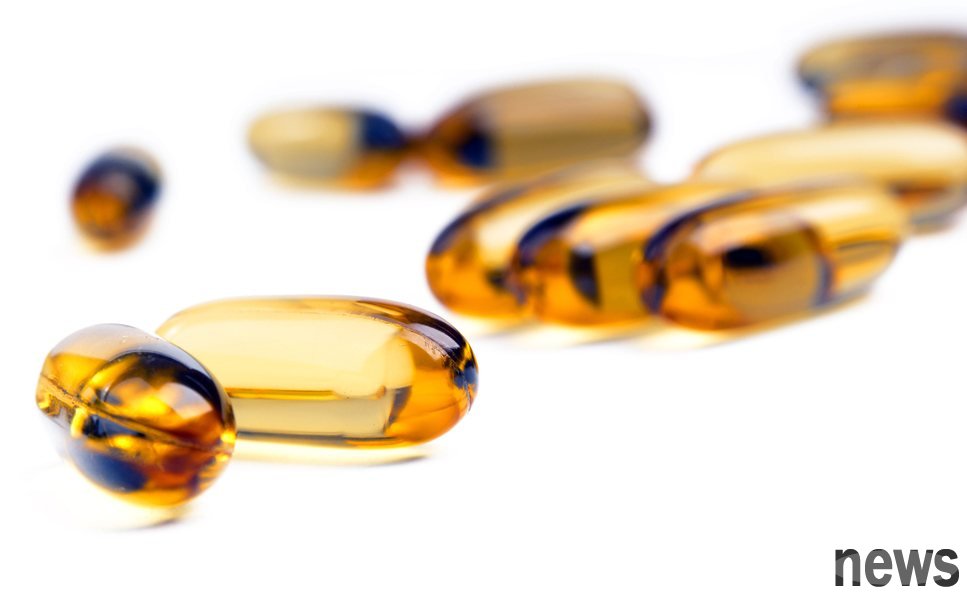The American Medical Association journal JAMA published Krill Oil for Knee Osteoarthritis the day before yesterday (2024-5-22). I sorted and translated it as follows: Study motor Knee dysitis (OA) affects about 65,400 people of 40 or older worldwide...

The American Medical Association journal JAMA published Krill Oil for Knee Osteoarthritis the day before yesterday (2024-5-22). I sorted and translated it as follows:
Study motorKnee dysitis (OA) affects about 65,400 people of 40 or older worldwide and is related to pain, functional limitations and illness. There is no drug therapy that can improve the natural history of OA.
Edible marine omega-3 polyvinyl and fatty acids such as fish oil are rich in eicosapentaenoic acid (EPA) and docosahexaenoic acid (DHA), which can reduce inflammation. Reduce pain, morning stiffness, and pain. However, these studies on treating OA have produced conflicting results. Another source of marine omega-3 fatty acids is Nanopoly. Both Nano-Based Oil and Fish Oil contain omega-3 fatty acids; however, Nano-Based Oil has better bioavailability than fish oil and contains antioxidant Basin, which can reduce free radicals, oxygen evacuation and inflammation. Therefore, the combination of omega-3 fatty acids and redox in Nagano oil may be a better OA treatment than fish oil.
In 3 random clinical trials (RCTs), daily anaerobic oil reduces certain aspects of knee pain, dysfunction and stiffness in patients with light knee joint OA (n = 56 and n = 235) and light knee joint pain (n = 47). None of these clinical trials measured fluid synovitis (an alternative indicator of OA structure progression).
Our random control trial evaluated the effects of 2g/day Nasol Oil on the major knee pain outcomes in participants with apparent knee pain and fluid synovitis over 24 weeks compared with the same placement agent.
Study subjectsParticipants were recruited from December 2016 to June 2019 through the OA Clinical Trial Network at Australian Public Hospitals in Melbourne, Sydney, Adrider and Perth, and a research organization in Hobart. Participants are eligible if they report apparent knee pain during screening, and MRI shows any fluid synovitis.
Exclusion criteria are marked with a clear history of knee injury; Level 3 radioactivity changes; other forms of inflammatory joint inflammation; seafood allergies; unwilling to stop taking Nassium and/or fish oil drugs 30 days before and during the test; use of anticoagulants, large doses of aspirin or non-sterile anti-inflammatory drugs; have received cortical steroid injections within the past 3 months; have received hyaluronic acid injections in the past 6 months; MRI Contraindications; pregnancy or breastfeeding; and inability to provide written informed consent.
Of the 452 participants selected, 262 were included in the study. Their average age is 61.6 years old (40-88 years old); 53% are female, with 130 being randomly assigned to the Nanosuo oil group and 132 being randomly assigned to the sommel group. During the trial period, 40 participants quit or missed (17 in the Nanosuke Oil Group and 23 in the consolation group), so the number of people who finally completed the experiment was 222. The number of participants followed each visit is: 241 people in 4 weeks, 235 people in 8 weeks, 230 people in 12 weeks, 226 people in 16 weeks, 224 people in 20 weeks, and 222 people in 24 weeks.
Research MethodsThe treatment group took two 1 gram of N.N. Oil capsules per day, each containing 190 mg/g EPA and 100 mg/g DHA, providing a total of 350 mg/g omega-3 and 12 mg/g omega-6 content (1:29 ratio). The consolation agent group receives a combination of vegetable oils (virgin cold-pressed olive oil, corn oil, palm kernel oil and chain triglycerides) without EPA or DHA, and other omega-3 content is less than 5 mg/g (0.5%). Both the Nanopoly oil and the pamper are given in the form of an indivisible glycerol capsule.
The main outcome was changes in knee pain in visual analog scale (VAS) over a 24-week period (range, 0-100; 0 indicates minimal pain; minimal clinically important improvement = 15)
Study ResultsAverage changes in knee pain in comparison with the placement agent (VAS score average change, -19.9 [Nanoke Oil] vs -20.2 [Putting agent]; mean difference between group, -0.3; 95% CI, -6.9 to 6.4). 51% and 54% of Nanosuke Oil Groups (67/130) and pacifiers (71/132) reported one or more adverse events. The most common adverse events were musculoskeletal and cervical tissue diseases, with 32 occurrences of Nano-System oil and 42 occurrences of the soothing agent, including knee pain (No-System oil n = 10; Subsidy group n = 9), lower limb pain (No-System oil n = 1; Subsidy group n = 5), and facial pain (No-System oil n = 3; Subsidy group n = 2).
ConclusionFor patients with knee jointitis who showed knee pain and fluid synovitis with MRI, 2 grams of nanogra per day did not improve knee pain for 24 weeks compared to the placement agent. These findings do not support the use of Nanopoly oil to treat knee pain in this group.
Original text: Nanosuo oil treats knee inflammationEditor: Gu Zihuan